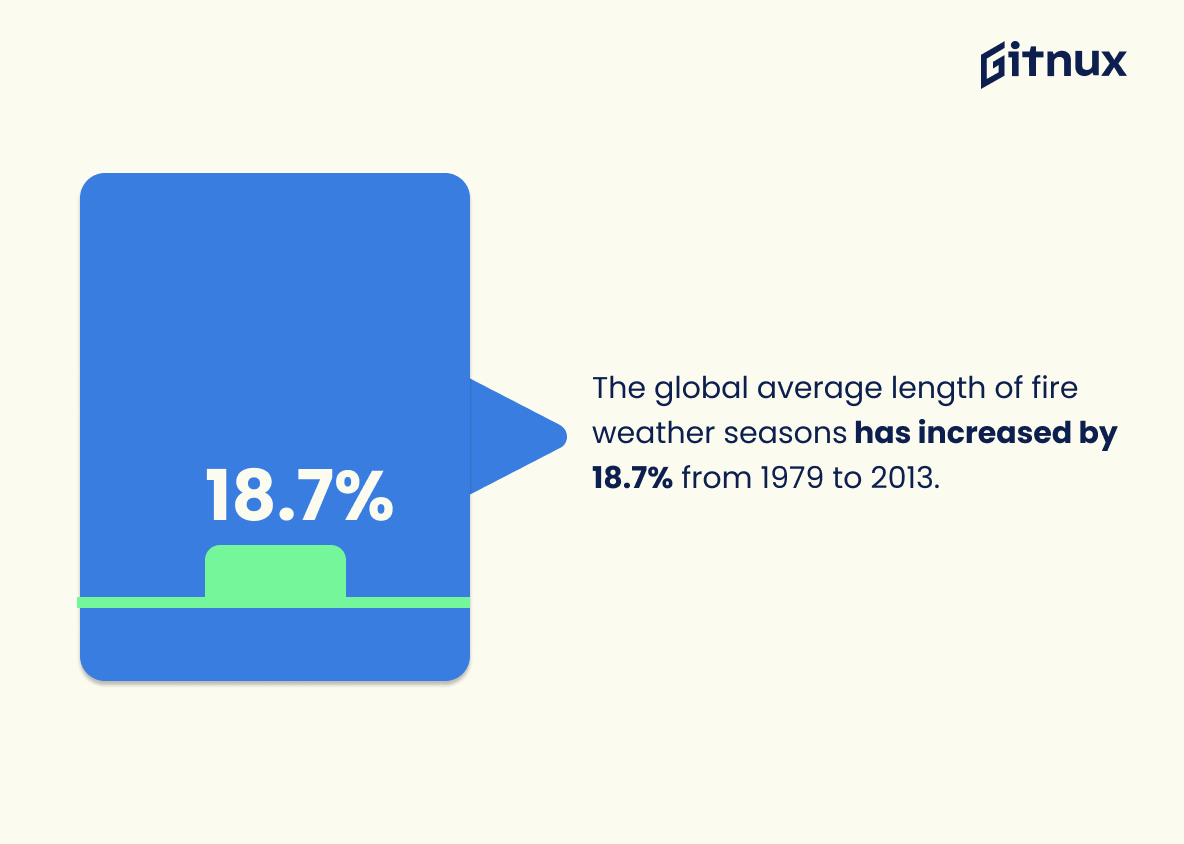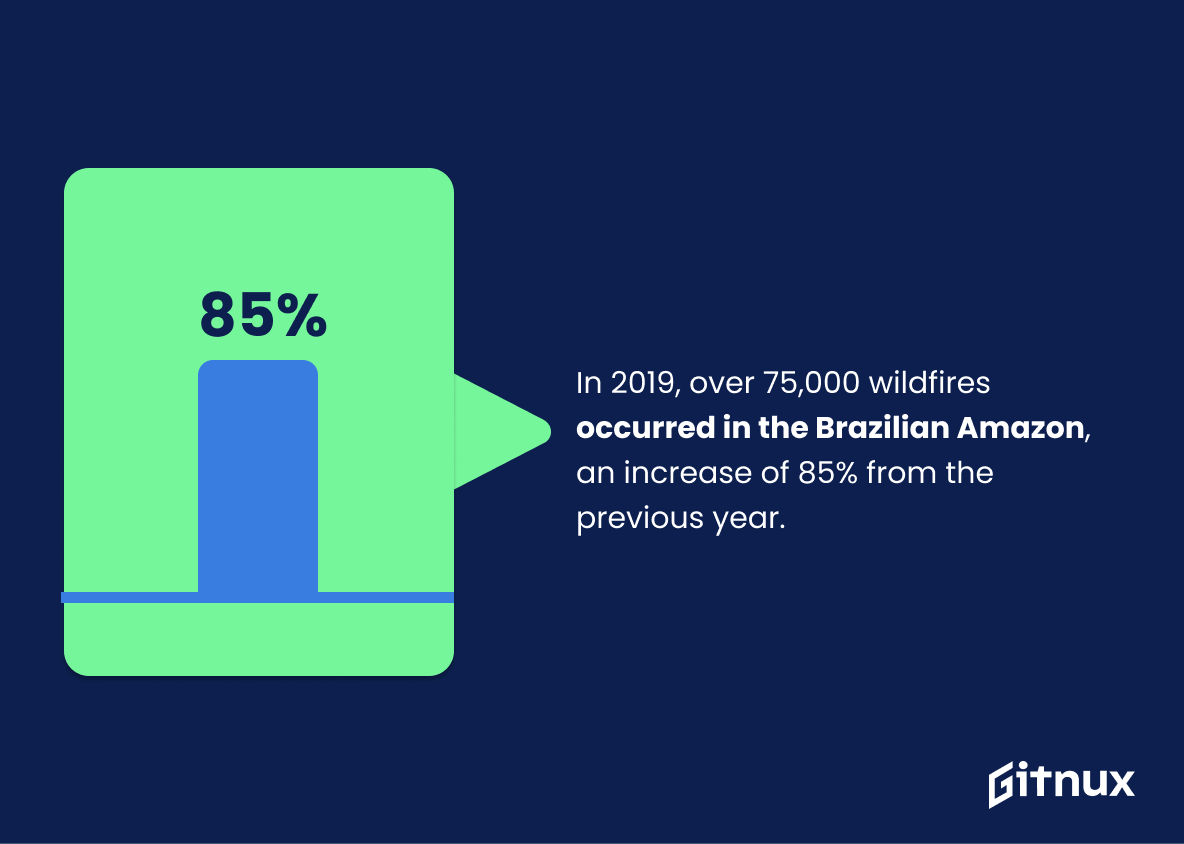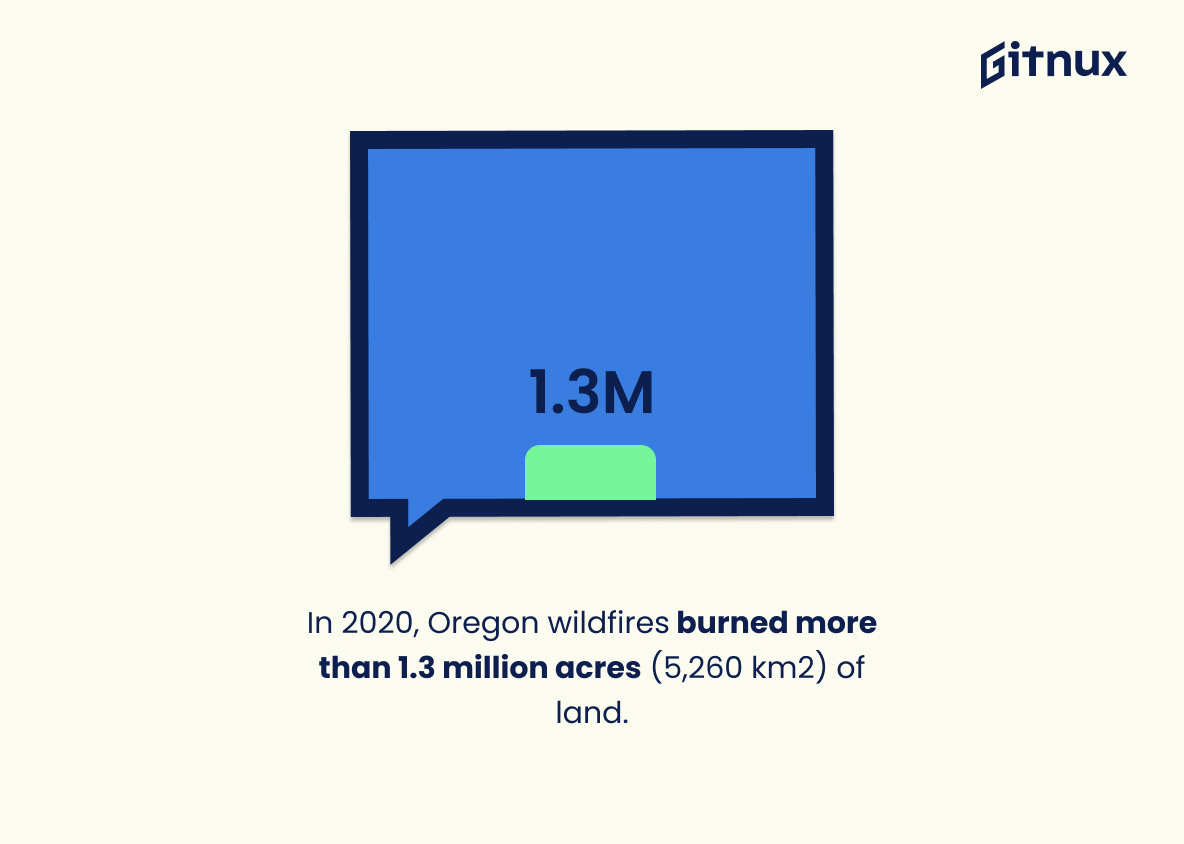Wildfires are a major global issue, with devastating impacts on both human lives and the environment. In the United States alone, wildfires burn an average of 4-5 million acres of land each year. The 10-year moving average for the number of wildfires in the U.S., from 2010 to 2019, was 64,100; however this figure skyrocketed in 2020 when 10.3 million acres were burned due to wildfire activity across America – making it one of the worst years on record for fire damage and destruction.
The costliest wildfire in terms of insured losses occurred during 2018’s Camp Fire in California at $8.5 billion dollars – but that is not all: as we move into 2021, 988 588 acres have already been burned by fires raging through California so far this year. Globally speaking too there has been an increase over time: research shows that since 1979 there has been an 18% rise globally in length of fire weather seasons which can be attributed to climate change induced variability .
In addition to these figures within North America itself other countries around world have also experienced their own share devastation caused by wildland blazes such as Portugal’s 2017 forest fires where 112 people lost their lives along with 500 000 hectares being destroyed or Australia’s 2020 bushfire season resulting 103 billion dollars worth damages inflicted upon its citizens and wildlife alike..
This blog post will explore further statistics related to Wildfire occurrences worldwide including those mentioned above plus many more facts about how they affect us today – stay tuned.
This statistic is a stark reminder of the devastating impact that wildfires have on the United States each year. It highlights the sheer scale of destruction that these fires can cause, and serves as a warning to us all to take the necessary steps to prevent them.
The 10-year moving average for the number of wildfires in the U.S. from 2010-2019 was 64,100.
This statistic is a telling indicator of the long-term trend in the number of wildfires in the U.S. over the past decade. It provides a valuable insight into the overall state of wildfire activity in the country, and can be used to inform decisions about how best to manage and prevent future wildfires.
Wildfire Statistics Overview
In 2020, 10.3 million acres were burned due to wildfires in the United States.
This statistic is a stark reminder of the devastating impact of wildfires in the United States. It paints a vivid picture of the destruction caused by these blazes, and serves as a reminder of the urgent need to take action to prevent and mitigate future wildfires.
The costliest wildfire in terms of insured losses was the 2018 Camp Fire in California at $8.5 billion.
The staggering cost of the 2018 Camp Fire in California serves as a stark reminder of the devastating financial impact that wildfires can have. With insured losses totaling $8.5 billion, this wildfire stands as a testament to the immense destruction that can be caused by these natural disasters.
As of September 2021, 988,588 acres have been burned in California due to wildfires.
This statistic is a stark reminder of the devastating impact of wildfires in California. It paints a vivid picture of the destruction that has been caused by the fires, with nearly a million acres of land burned. It serves as a powerful reminder of the need to take action to prevent and mitigate the effects of wildfires.
The global average length of fire weather seasons has increased by 18.7% from 1979 to 2013.
This statistic is a stark reminder of the reality of climate change: that fire weather seasons are becoming longer and more intense. This means that wildfires are more likely to occur and spread, leading to more destruction and devastation. It is a sobering reminder of the need to take action to reduce the effects of climate change and protect our environment.
In 2020, there were 52,113 wildfires in the United States.
This statistic is a stark reminder of the devastating impact of wildfires in the United States in 2020. It serves as a reminder of the need for increased awareness and action to prevent and mitigate the effects of wildfires.
The U.S. Forest Service spent $2.44 billion on firefighting in 2017, the highest cost on record.
This statistic is a stark reminder of the devastating effects of wildfires. It highlights the immense financial burden that the U.S. Forest Service has had to bear in order to combat the growing number of wildfires. It also serves as a warning that the costs of fighting wildfires are likely to continue to rise in the future.
From 2000 to 2020, more than 80% of wildfires in the United States were started by humans.
This statistic is a stark reminder of the devastating impact humans have had on the environment. It highlights the need for greater awareness and action to reduce the number of wildfires caused by human activity. It also serves as a warning that if we do not take steps to reduce the number of human-caused wildfires, the consequences could be catastrophic.
In 2018, wildfires in Europe consumed over 194,100 hectares (480,000 acres) of land.
This statistic is a stark reminder of the devastating impact that wildfires can have on the environment. It highlights the sheer scale of destruction that can be caused by these fires, with over 194,100 hectares of land being consumed in 2018 alone. This serves as a warning to us all that we must take action to protect our environment from the threat of wildfires.
In 2019, over 75,000 wildfires occurred in the Brazilian Amazon, an increase of 85% from the previous year.
This statistic is a stark reminder of the devastating effects of climate change. The 85% increase in wildfires in the Brazilian Amazon in 2019 is a clear indication that the planet is facing an environmental crisis. This statistic serves as a warning that urgent action must be taken to protect our planet and its inhabitants.
In 2019, wildfires in Siberia burned over 3 million hectares (7.4 million acres) of land.
The staggering statistic of 3 million hectares (7.4 million acres) of land burned in Siberia in 2019 serves as a stark reminder of the devastating impact of wildfires. It is a powerful illustration of the destruction that can be caused by these natural disasters, and a reminder of the importance of taking steps to reduce the risk of wildfires.
2020 was the worst wildfire season in Colorado state’s history with over 625,356 acres burned.
This statistic is a stark reminder of the devastating effects of wildfires in Colorado state’s history. It highlights the urgent need for more effective wildfire prevention and management strategies to protect the state’s natural resources and communities. The 625,356 acres burned in 2020 is a stark reminder of the destruction that can be caused by wildfires and the importance of taking action to prevent them.
In 2020, Oregon wildfires burned more than 1.3 million acres (5,260 km2) of land.
The staggering statistic of 1.3 million acres of land burned in Oregon wildfires in 2020 serves as a stark reminder of the devastating impact of wildfires on the environment. This figure is a testament to the destruction that can be caused by these natural disasters, and serves as a call to action to take steps to prevent and mitigate future wildfires.
The Mendocino Complex fire in 2018 was the largest wildfire in California’s history, burning 459,123 acres (1,857 km2) of land.
This statistic is a stark reminder of the devastating impact that wildfires can have on the environment. It highlights the need for greater awareness and action to prevent and manage wildfires, as the Mendocino Complex fire was the largest in California’s history. This statistic serves as a call to action for individuals, communities, and governments to take steps to reduce the risk of future wildfires.
Since 1961, the Federal Government of Canada has spent an average of CAD$867.8 million annually on wildfire management.
This statistic is a testament to the importance of wildfire management in Canada. It shows that the Federal Government has consistently invested in wildfire management over the past six decades, highlighting the significance of this issue.
The 2017 Portugal wildfires caused a record number of 112 deaths and burned over 500,000 hectares of land.
This statistic is a stark reminder of the devastating impact that wildfires can have on human life and the environment. It serves as a powerful illustration of the need for greater awareness and prevention of wildfires, as well as improved response and recovery efforts.
Conclusion
The statistics presented in this blog post demonstrate the devastating effects of wildfires on land, property and lives around the world. Wildfires have burned millions of acres each year in the United States alone, with 2020 being a particularly destructive season due to record-breaking acreage burned. The costliest wildfire was 2018’s Camp Fire in California at $8.5 billion dollars, while other countries such as Portugal and Canada have also experienced significant losses from these disasters. Climate change is likely contributing to an increase in fire weather seasons globally which could lead to more frequent and intense fires going forward if preventative measures are not taken soon. It is clear that wildfires pose a serious threat both domestically and internationally, making it essential for governments to invest resources into mitigating their impacts now before they become even more costly down the line.
References
0. – https://www.iii.org
1. – https://www.nifc.gov
2. – https://www.nrcan.gc.ca
3. – https://www.earthobservatory.nasa.gov
4. – https://www.bbc.com
5. – https://www.artemis.bm
6. – https://www.nfpa.org
7. – https://www.reuters.com
8. – https://www.effis.jrc.ec.europa.eu
9. – https://www.denver.cbslocal.com
10. – https://www.fire.ca.gov
11. – https://www.opb.org
12. – https://www.fas.org
13. – https://www.researchgate.net















